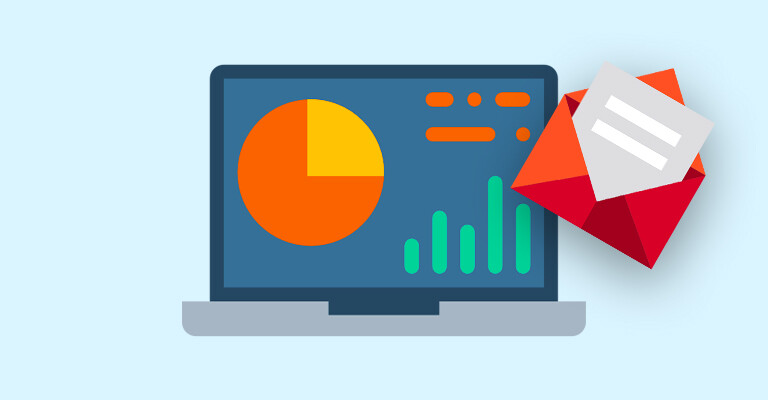What occupies your time at work, more than anything else? You might be tempted to say “meetings,” or list a major project you’ve been working on, or even cite a particular client who never seems satisfied with your efforts. But if you’re like the vast majority of American workers, it’s likely that the biggest percentage of your day is spent sending, reading, and organizing emails.
Email seems like a small part of your day because each message only takes a few minutes to compose—at most. But when you’re sending and receiving hundreds of emails a day, and checking your email in the downtime, those eight hours of work quickly get whittled down to three or four spent on non-email tasks.
Obviously, everyone is different, but if you want to find out exactly how your email habits shape your overall performance, you’ll need an email analytics tool to help you.
Why Email Analytics Tools Are in Short Supply
Unfortunately, email analytics apps are hard to come by. But why?
- Underestimation. Unfortunately, many people—including software developers—vastly underestimate the amount of time that emails take up in a given day. It’s not like sending automated transactional emails, communication via email with real people requires time. Accordingly, email analytics has been a low priority on all sides.
- Email marketing focus. Many email analytics platforms are geared toward email marketers, who have a more pressing need and a bigger budget, rather than office workers trying to improve their own productivity – or office managers trying to improve the productivity of their team members.
- Productivity improvements. The majority of apps focusing on improving productivity add some functionality that makes workers faster or more efficient, rather than getting to the heart of the problem with objective data analysis.
There are a lot of great ways to get more value out of your analytics tools. You can try to get an HTML email signature to get started.
The Best Email Analytics Tools Available
Here are some email analytics tools that can help you monitor and analyze your email usage (and, in some cases, that of your employees):
1. EmailAnalytics. EmailAnalytics is the most comprehensive app on this list, and probably the closest to an actual “analytics” app. EmailAnalytics provides analytics for Gmail, pulling data from your Gmail account about how many emails you have in various folders, how many emails you send per day, who you’re frequently emailing, and how your conversations usually unfold. It’s all the data you need to positively determine how you’re spending your time and how that time expenditure can be improved in the future.
2. Sortd. Sortd’s analytics functionality stems from its ability to help you organize your email inbox. Through the use of labels and columns, you can effortlessly organize your emails into different categories and establish priorities of when and how to deal with them. If you set your email workflow up like a conveyor belt, moving closer and closer to completion, you can determine—at-a-glance—how you’re performing, and how many emails you have at each stage of completion.
3. ActiveInbox. ActiveInbox is another system designed to help you sort your emails into a kind of to-do list, which you can then use to monitor your workloads and efficiency at completing tasks. Functioning as a Gmail add-on, ActiveInbox lets you convert each email into an actionable task, under a hierarchy of projects and goals.
4. Todoist. Todoist offers a series of products designed to help people manage their work responsibilities and to-do lists, but their specific Gmail app is the best for email analytics. The app allows you to convert your email inbox into a kind of to-do list, allowing you to separate, organize, and eventually complete tasks. When you’re done, you can run reports that show your task-oriented performance (including time metrics) throughout the day.
5. The Email Game. The Email Game is a fun and free app that won’t tell you explicitly how much time you’re spending on email—but will show you how messy your inbox is and give you a chance to overcome it. After entering your email address, the Email Game will start showing you emails and give you a strict time limit on deciding what to do with those emails. If you take too much time or skip emails, you lose points. It’s fantastic if you’re competitive or want to get your inbox to zero quickly.
With the help of these five email analytics tools, you should be able to get a better understanding of how you use email on a daily basis. You’ll learn the productivity pitfalls that keep you and your employees from being efficient, and key areas that you can improve for both you and your coworkers’ sakes.
Be sure to check out these other email productivity tools and Gmail plugins that can improve your productivity. The sooner you get started with email analytics, the sooner you can start making improvements, so experiment with these platforms and see how much you can improve your efficiency, as well as that of your employees, team, or colleagues.

